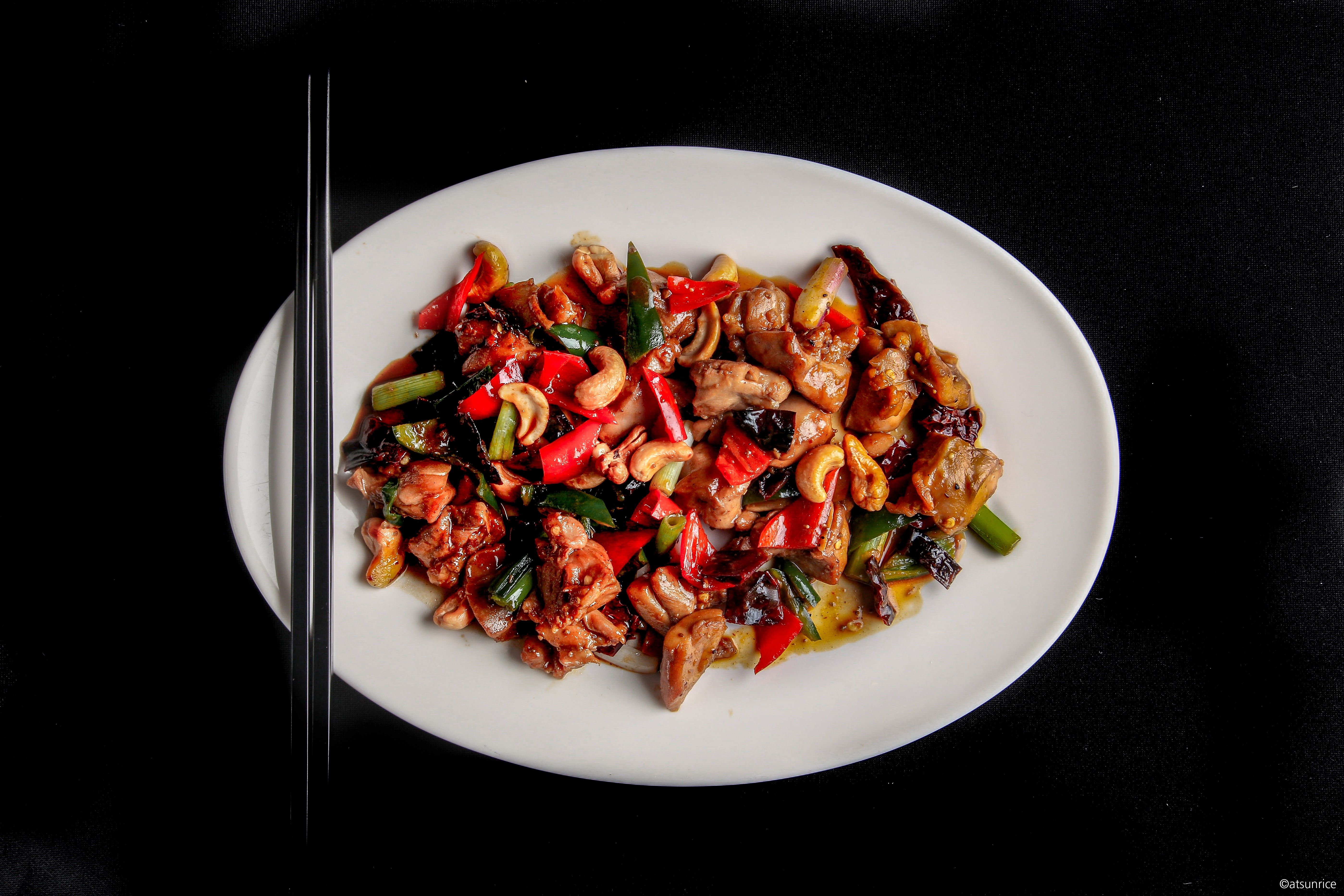The menu of the Chinese joint near my house unhelpfully describes Kung Pao Chicken as a dish of ‘Stir-fried diced chicken with chillies’. No mention of its characteristic sweet-and-sour sauce that hides a deep spiciness or its delightful contrasts of crunchy-soft textures or just how visually stunning its medley of chicken, golden peanuts and bright red chillies looks.
But there are not many who need a menu description to know what Kung Pao Chicken is. It is, undisputedly, one of the most famous exports from China to come to the rest of the world—found on lunch specials and Southeast Asian menus everywhere, sometimes under the guise of similar sounding names like Kong Po or Gong Bao. It’s the latter that explains Kung Pao’s origins—It was named after a late Qing Dynasty governor of Sichuan, Ding Baozhen, whose official title was gongbao and who is said to have particularly enjoyed eating it.
Like most things that traverse cultures, there is much lost, or perhaps changed, in translation when it comes to Kung Pao. In Thailand, the peanuts and lip-tingling Sichuan peppers get swapped for cashews and Nam Prik Pao (Thai chili paste). In India, spices come into the picture and vegetables get added. In the North American continent, the sauce becomes more sweet, than sour or spicy. Some versions come with diced celery sticks, others with green and red peppers. Panda Express, America’s fast food response to Chinese cuisine, does theirs with zucchini. In its worldwide sojourn, what Kung Pao Chicken gains in ubiquity, it loses in authenticity. Almost all Chinese restaurants around the world will have Kung Pao chicken on their menu but no two will make it exactly the same. Even in Sichuan, the land that bequeathed Kung Pao chicken on us all, chefs can’t quite agree if it’s authentic to make it with nuts—peanuts or cashew—or without.
Kung Pao Chicken is a dish from everywhere and for everyone. With so many variations and versions, it’s tough to pinpoint what really makes for an authentic plate. Perhaps the only thing that can be said with the utmost certainty is that it is stir-fried diced chicken with chillies, and maybe, the menu at my neighbourhood Chinese joint isn’t all that wrong.
In Singapore, our Kung Pao chicken is chock-full of chillies — dried and fresh — , heavy on pepper, and with not a celery or zucchini in sight. And it falls on the cashew side of the nut debate, with just a hint of sauce. What about authenticity, you ask? Let’s just say it’s authentic to Singapore and endlessly delicious.
KONG PAO CHICKEN
By: At-Sunrice Globalchef Academy
Ingredients
- Marinade:
- Light soy sauce
- Oil
- Corn flour
- Chinese cooking wine
- Gravy:
- Light soy sauce
- Black vinegar
- Sugar
- Water
- Corn flour
- Boneless, skinless chicken,(cut into 2 cm cubes)
- Cooking oil
- Long dried chili, seeded, 2 cm long
- Red chili
- Green chili
- Sichuan pepper powder
- Ginger, thinly sliced
- Garlic, thinly sliced
- Spring onions (scallions)
- Cashew nuts
- Chinese cooking wine
Directions
- Step 1 Mix all the marinade ingredients together and marinate the chicken cubes for ½ hour.
- Step 2 Mix the light and dark soy sauce, black vinegar, water and sugar in a mixing bowl, and boil the mixture
- Step 3 thicken it with corn starch.
- Step 4 Deep-fry cashew nuts in cooking oil until golden brown and set aside.
- Step 5 Oil blanch the chicken until cooked and set aside.
- Step 6 Add oil in a wok, stir fry the chilies for 1 minute until dark brown
- Step 7 add in ginger, garlic and stir until fragrant
- Step 8 add in the fried chicken cubes.
- Step 9 Add the Chinese cooking wine, stir fry for 1 minute. Add the gravy, Sichuan pepper powder and stir well.
- Step 10 Add the spring onions and cashew nuts.
- Step 11 Serve with steamed rice.
Video

This site uses Akismet to reduce spam. Learn how your comment data is processed.